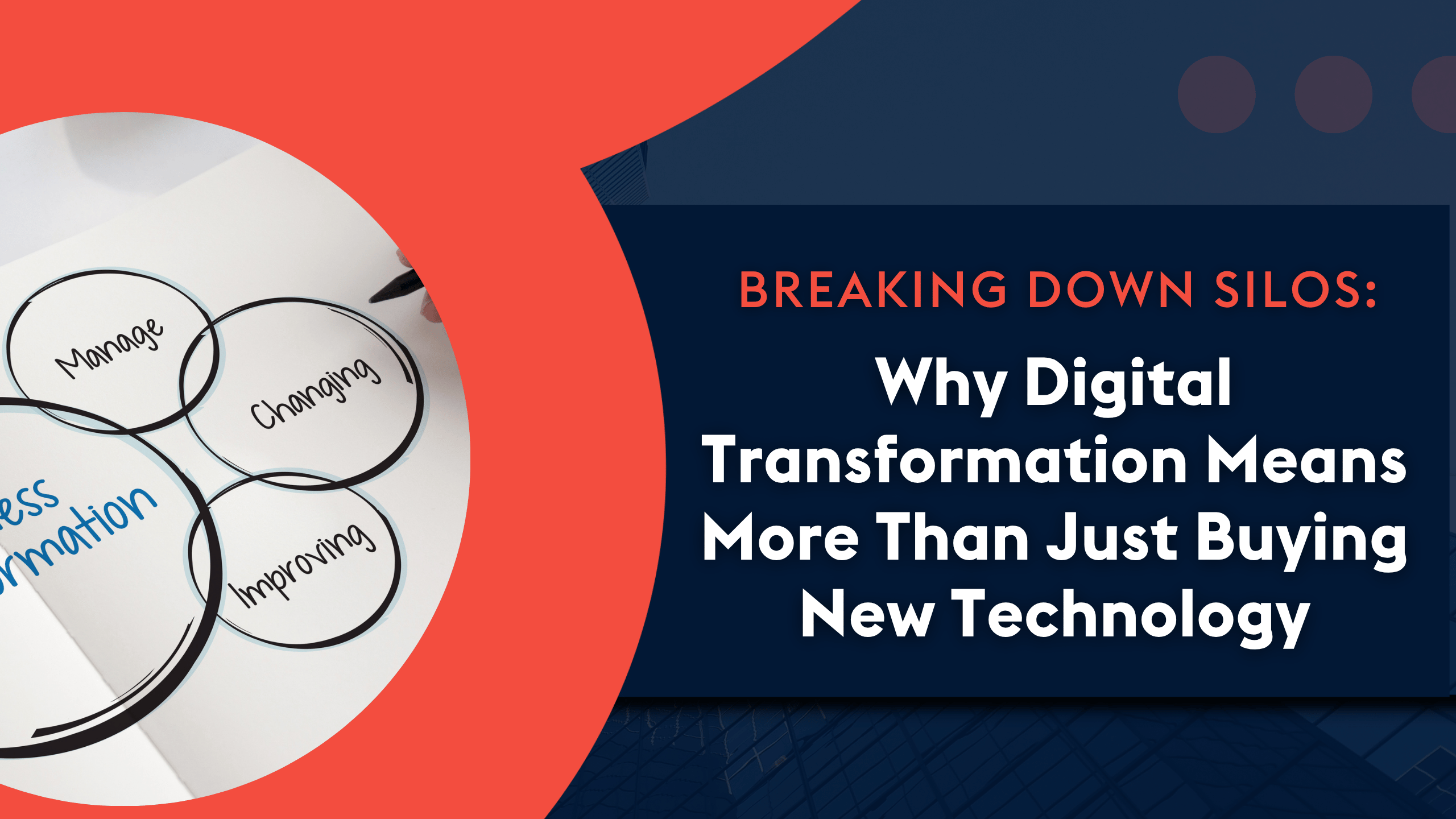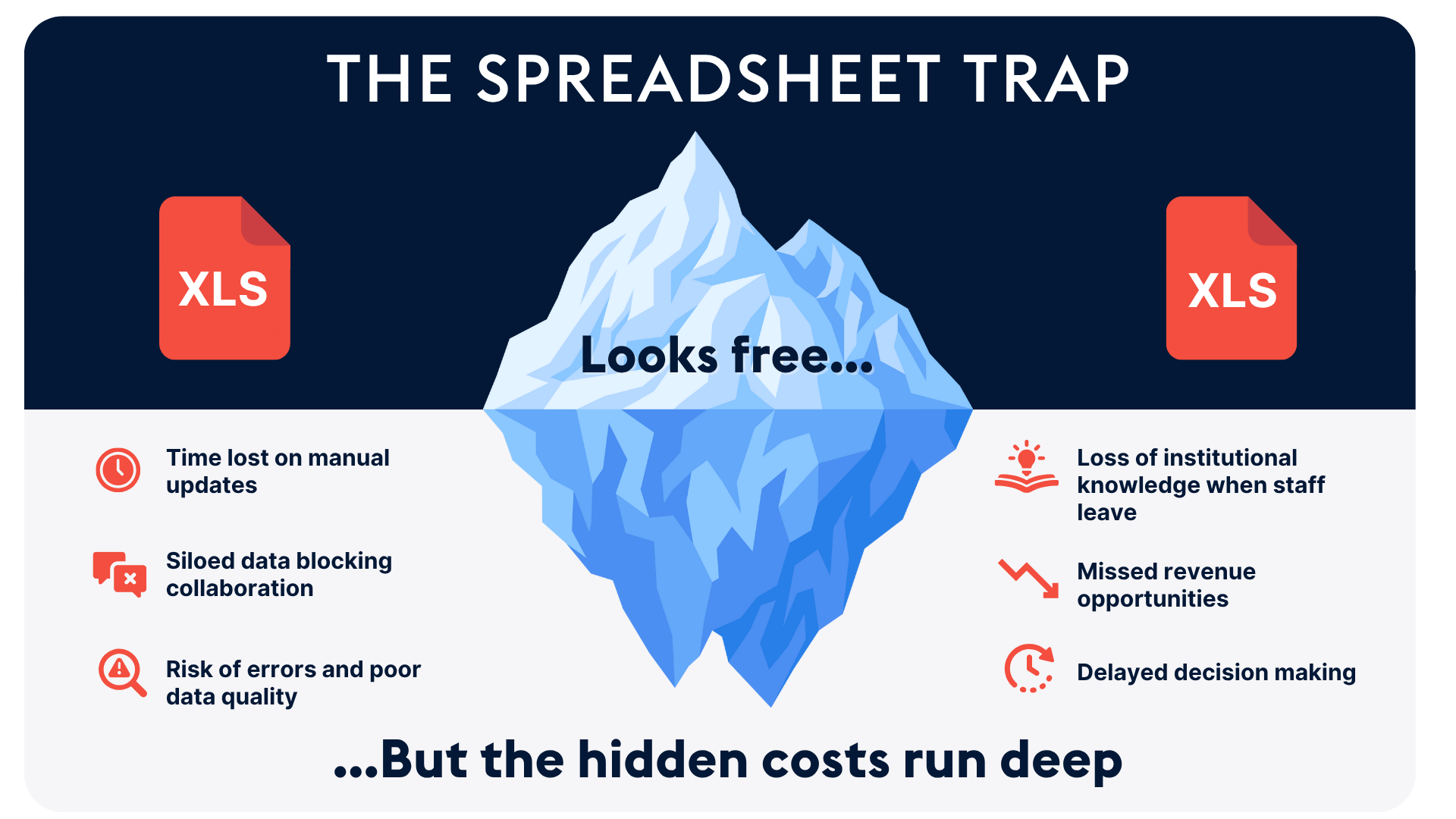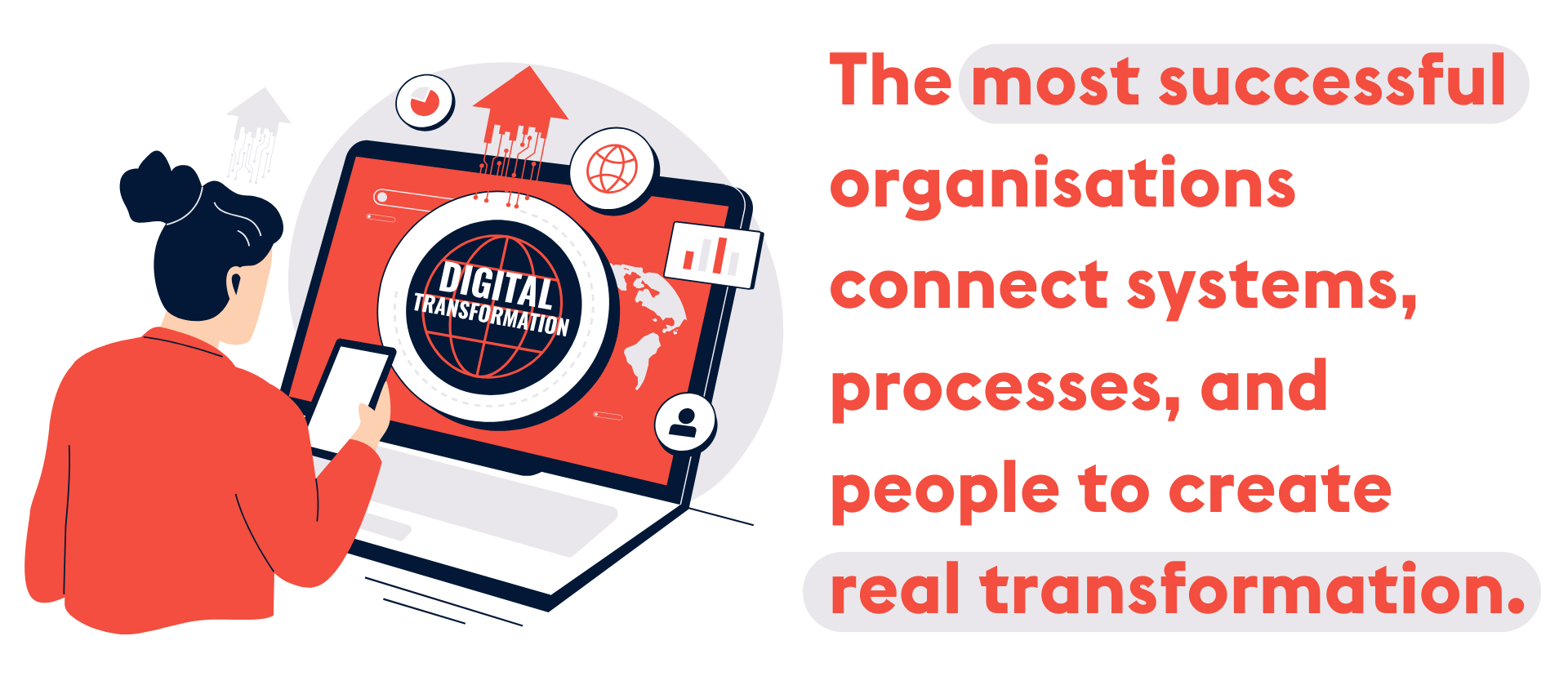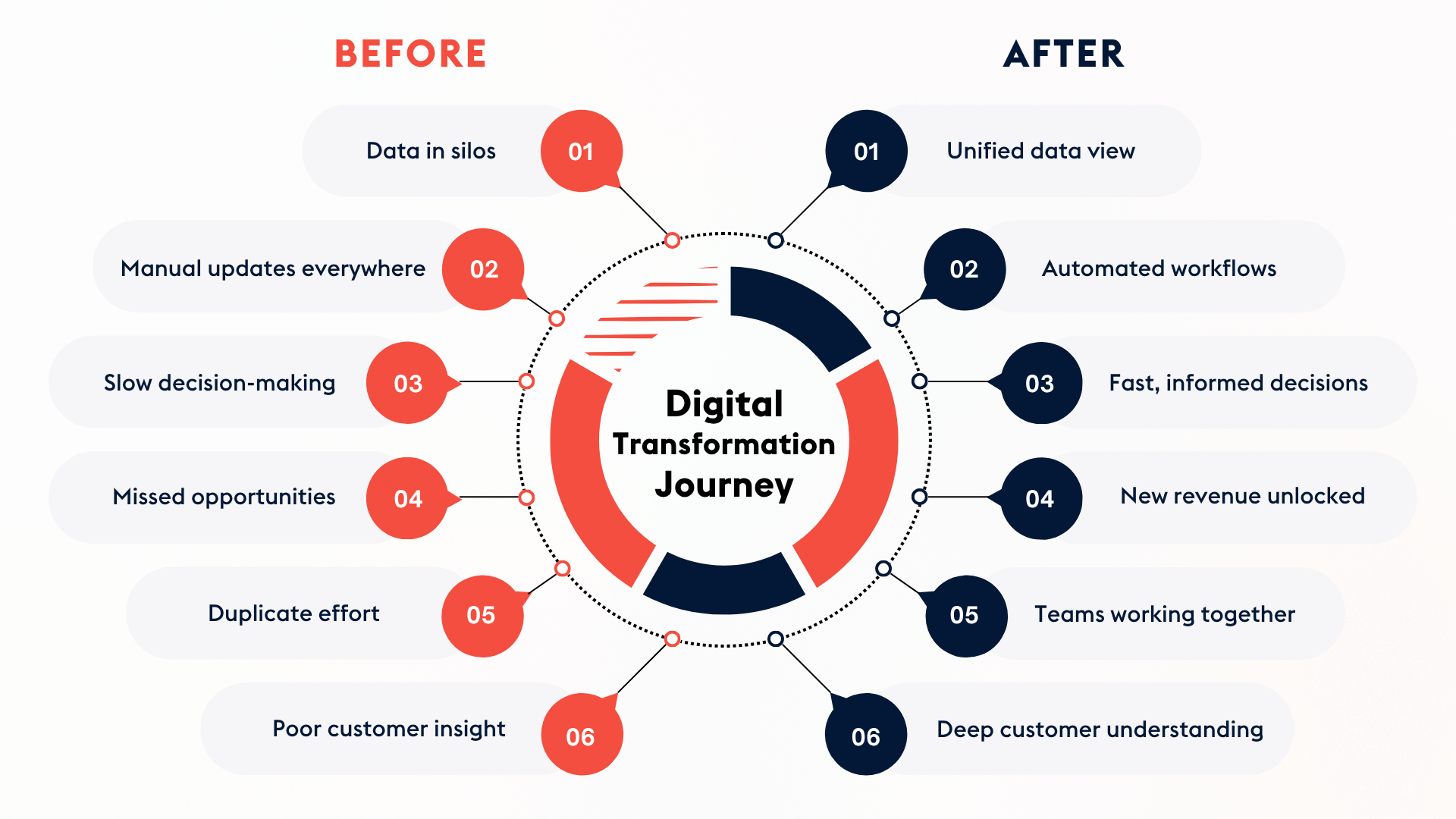
After years of working with businesses across different industries, we’ve noticed that “digital transformation” has become one of the most talked-about topics in business. You can’t attend a conference without hearing speakers emphasise how essential it is to go digital.
Yet despite all this discussion, many organisations still don’t understand what digital transformation actually means – and more importantly, they don’t realise the cost of getting it wrong.
One of the most revealing insights from conversations with industry leaders is a fundamental misunderstanding about digital transformation. Many people believe that digital transformation simply means purchasing new technology and implementing their existing processes within it. However, this approach fundamentally misses the point. Digital transformation actually means changing processes and doing things differently. The technology itself isn’t usually the problem: it’s the broken processes that organisations try to force into new systems.
This misconception leads to expensive technology implementations that fail to deliver expected returns. Organisations invest heavily in CRM systems, ERP platforms, and AI tools, only to find their teams reverting to familiar methods – often spreadsheets – because the underlying processes haven’t been addressed.
The persistence of spreadsheets in modern business operations perfectly illustrates the hidden costs of disconnected systems. While spreadsheets appear free, they create significant hidden expenses:
Our CRM implementation specialists often encounter this challenge with prospective clients who share Excel sheets containing 15 or more tabs filled with information that only makes sense to the person who created it. The reality is that spreadsheets require constant maintenance, consume valuable time, and create information silos that prevent collaboration. When organisations calculate the true cost – including the time spent building, updating, and maintaining these systems – the “free” solution becomes remarkably expensive.
Many critical business processes, such as forecasting, should be collaborative activities that leverage the collective intelligence of teams. However, when these processes are trapped in individual spreadsheets, collaboration becomes nearly impossible. Teams lose the ability to work together effectively and make data-driven decisions based on shared insights.

Companies often have deep institutional knowledge built over decades. However, this knowledge frequently exists only in employees’ heads, creating significant business risks:
When processes and customer insights exist only as “tribal knowledge,” organisations become vulnerable to knowledge loss when key personnel leave. Many business leaders know their processes instinctively, but when asked to document or share this knowledge, they struggle to articulate it systematically. This creates a situation where valuable insights remain locked away rather than being accessible to the broader organisation.
New employees struggle to reach productivity quickly when critical information isn’t systematically captured and shared. The onboarding process becomes lengthy and inefficient, limiting the organisation’s ability to scale effectively.
True digital transformation requires breaking down the silos between different systems and departments. The most successful organisations are those that connect their ERP systems, CRM platforms, and other tools to create a unified view of their business.
Many organisations claim to have integrated systems, but the reality is often superficial. Most CRM vendors offer basic integration with ERP systems, but this typically only covers contact-level information. True integration goes much deeper, connecting the full spectrum of business data such as invoices, product performance, customer behaviour patterns, and market trends.
Real integration means having access to comprehensive customer histories, understanding product performance across different segments, and being able to analyse trends that span multiple systems and departments.
A successful CRM project depends entirely on the quality of data entering the system. Proper CRM implementation requires close alignment between marketing and sales teams. Marketing teams need feedback from sales to understand which leads convert and why, whilst sales teams need qualified leads and customer insights from marketing efforts.
When systems remain disconnected, different departments operate in isolation, leading to duplicated efforts, missed opportunities, and conflicting customer experiences.

Organisations relying on disconnected systems often discover problems too late. Some business leaders report that it can take several weeks before they notice that a customer has stopped buying. This delay occurs because they must manually search through spreadsheets to identify these changes. However, with connected database systems that automatically alert salespeople when customer purchasing patterns change, these issues can be identified within days rather than months.
When customer data is siloed, organisations miss cross-selling and upselling opportunities. The inability to see the complete customer picture means leaving money on the table with existing accounts – particularly critical in industries where 85-95% of revenue comes from existing customers.
Disconnected systems make it difficult to understand true business performance. Leaders may see overall positive numbers whilst missing underlying issues – some customers spending more, others less, with no clear visibility into the trends driving these changes.
Successful digital transformation begins with understanding and documenting current processes. Organisations need to map their workflows, identify inefficiencies, and design improved processes before selecting technology solutions.
Related: CRM Set-Up Problems: What Can Go Wrong and Why It Matters
The effectiveness of any AI or automation tool depends on the quality of underlying data. Organisations must prioritise:
Digital transformation isn’t just about technology – it’s about people. Organisations must:

Organisations that successfully implement integrated digital systems gain significant competitive advantages:
The risk of maintaining disconnected systems extends beyond immediate operational inefficiencies. Organisations that fail to embrace true digital transformation by connecting their systems, processes, and people, risk falling behind competitors who can respond more quickly to market changes and customer needs.
The question isn’t whether to invest in digital transformation, but whether you can afford not to. The hidden costs of disconnected systems – missed opportunities, delayed responses, and operational inefficiencies – often far exceed the investment required to implement integrated, connected solutions.
Don’t let disconnected systems continue costing your business. Use our comprehensive Digital Transformation Readiness Checklist to:
✅ Assess your current state across data, processes, and technology
✅ Identify quick wins and priority improvement areas
✅ Create a strategic roadmap for successful transformation
✅ Track your progress with clear success metrics
This practical, step-by-step guide will help you move beyond just buying technology to creating real business transformation. Download the free checklist via the link below.